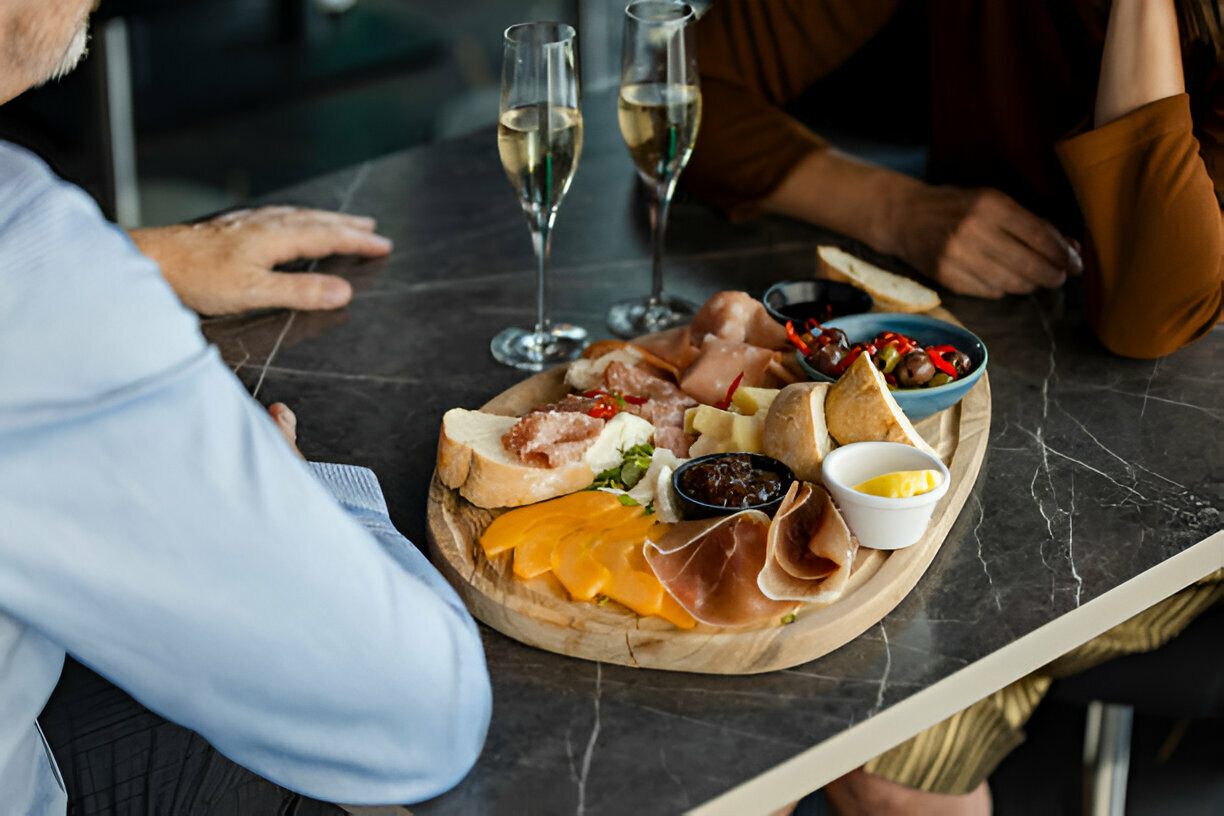Have you ever been to a gathering where the star of the show isn’t a fancy entree or a decadent dessert but rather a beautifully arranged board filled with an assortment of delicious treats? That’s the magic of a charcuterie board! In this guide, we’ll delve into how to make a charcuterie board, from selecting the finest cheeses to pairing it with a fantastic wine. Whether you’re hosting a soirée or simply treating yourself to a gourmet snack, mastering the art of the charcuterie board is sure to elevate any occasion.
What is a Charcuterie Board?
A charcuterie (pronounced shar-Koo-tuh-ree) board is more than just an appetizer platter; it’s a culinary masterpiece combining various flavors, textures, and colors into one visually stunning presentation.
Traditionally, a charcuterie board features an array of cured meats, cheeses, fruits, nuts, and condiments, all artfully arranged on a wooden board or platter. However, the beauty of a charcuterie board lies in its versatility—you can customize it to suit your taste preferences and dietary restrictions. From savory to sweet, the possibilities are endless!
How to Make a Charcuterie Board
- Choose Your Cheeses
Cheese is the cornerstone of any great charcuterie board, so start by selecting diverse cheeses to tantalize your taste buds. Aim for various textures and flavors, including hard, firm, soft, and crumbled cheeses. Some popular options include Asiago, aged gouda, cheddar, brie, blue cheese, and goat cheese. Remember to let your cheeses come to room temperature before serving to enhance their flavors.
- Pick Your Mix of Meats
Next, add a selection of cured meats to your board for a savory punch. Italian dry salami, prosciutto, and Genoa salami are classic choices that pair well with a variety of cheeses. Get creative with your meat selections, but be sure to include a mix of flavors and textures to keep things interesting.
- Find Your Favorite Fruits
Balance out the richness of the cheeses and meats with a selection of fresh fruits. Grapes, strawberries, figs, and apple slices are popular choices that add a touch of sweetness and acidity to your board. Arrange the fruits strategically to create visual interest and complement the other elements on your board.
- Consider Your Crackers
No charcuterie board is complete without a selection of crackers or breads to accompany the cheeses and meats. Choose a variety of crackers, breadsticks, and sliced baguettes to add texture and crunch to your board. Don’t forget gluten-free options for guests with dietary restrictions!
- Decide on Dips and Spreads
Enhance the flavors of your charcuterie board with a selection of dips and spreads. Hummus, mustard, honey, and fig jam are popular choices that add depth and complexity to your tasting experience. Place the dips in small bowls or ramekins and situate them throughout the board for easy access.
- Assemble Your Charcuterie
Now comes the fun part—arranging all your delicious ingredients on a wooden board or platter! Start by placing the cheeses and meats in separate clusters, then fill in the gaps with fruits, nuts, crackers, and dips. Get creative with your presentation, using different shapes, textures, and heights to create visual appeal. Don’t be afraid to play around with different arrangements until you find one that looks as good as it tastes!
More: How to Taste Wine: A Quick Guide to Develop Your Palate
What Wine Goes with Charcuterie?
No charcuterie board is complete without a perfectly paired wine to enhance the flavors of the cheeses and meats. When it comes to choosing the right wine, the key is to match the intensity and flavor profile of the food.
- Sparkling wines and crisp whites, such as Champagne, Prosecco, and Sauvignon Blanc, are ideal for cutting through the richness of the cheeses and meats.
- Light-to-medium-bodied whites such as Chardonnay and Pinot Blanc also beautifully complement a charcuterie board’s flavors.
- If you prefer red wine, opt for light-bodied varieties like Pinot Noir or Grenache, which won’t overpower the delicate flavors of the food.
- For heartier charcuterie boards with bold flavors, medium to full-bodied reds like Cabernet Sauvignon and Merlot are excellent choices.
Let Us Show You How It’s Done!
Now that we have explored how to make a charcuterie board, why not visit us to see how we do it? Whether you’re planning a casual gathering or a formal dinner party, Curious Cork Wine & Provisions is here to help you create a culinary masterpiece that will leave everyone craving more. Contact us today at (407) 794-2729 to reserve your spot, and let us take the stress out of entertaining. Cheers to good food, great wine, and even better company!

